Navigating the green seas: The rise of Well-to-Wake emission reporting in alternative fuels
The shipping industry is transitioning towards alternative fuels, with electrofuel emerging as the top choice for those seeking a green transition. While LNG (liquified natural gas) still dominates the alternative fuel market in terms of fleet size, the growing number of orders for electrofuel newbuilds and retrofits indicates that it is no longer a question of if but when electrofuel will overtake LNG.
Despite global geopolitical uncertainties in 2023, the shipping industry has shown resilience compared to other markets. In 2022, a record number of orders for new dual fuel-capable vessels and retrofit engines were placed. Just a year ago, there were 73 methanol-capable vessels on order ready for delivery by 2025. Now that number has surged to 131, and when including the number of orders placed by major engine manufacturers Wärtsilä and MAN this number exceeds to over 300 vessels.
This increase in orders indicates that methanol demand volumes could reach approximately 40 million tonnes annually by 2030. Last year’s best estimates sat at 7 million tonnes by 2030, presenting a drastic increase and a massive opportunity for Liquid Wind.
The shipping industry towards the green transition
The green transition is now the main stay of strategy for nearly every sector of the shipping industry, with many of the biggest names in shipping declaring Net Zero ambitions to be achieved by 2050.
Companies recognize the economic benefits of decarbonization targets in enhancing sustainability credentials, and customer’s demand green shipping services to reduce emissions from transported goods. In the meantime, regulations, and policies around decarbonization, like FuelEU Maritime and the EU ETS, are being introduced and becoming increasingly relevant in driving the transition to low carbon shipping.
Learn more about Well-to-Wake
Well-to-Wake emission reporting: The new norm
In assessing the impact of alternative fuels, well-to-wake (WTW) emission reporting has gained traction as a crucial evaluation framework. WTW considers emissions not only during combustion but throughout the entire lifecycle.
When choosing the right fuel, it's vital to consider the greenhouse gas (GHG) footprint of each production pathway. Biofuels, for example, have significant impacts due to cultivation, transport, and indirect land use. On the other hand, eMethanol offers advantages with its short and transparent production process, especially when derived from green hydrogen.
In addition to reducing GHG emissions, e-fuels offer other value chain benefits. Sustainability reporting not only includes Environmental performance but also Social, and Governance (ESG) criteria, making responsible fuel sourcing and the fuel pathway essential considerations.
Bottom Line: Cost and emission reductions
By switching to e-fuels like eMethanol, shipping companies can achieve almost zero onboard emissions, eliminating the need for additional capital expenditure and time associated with onboard emission-saving technologies. Less eMethanol is required to reach emission reduction targets compared to other biofuel alternatives with a higher GHG intensity, resulting in significant cost savings.
As the shipping industry sets ambitious Net Zero targets, the importance of well-to-wake lifecycle assessments continues to grow. With the increase in methanol orders, alternative fuels are set to play a significant role in achieving these targets. By adopting WTW reporting shipping companies can make informed decisions that contribute to sustainable and cost-effective operations in line with their Net Zero ambitions.
Content contributors
Felix Jung, Sustainability Manager, Liquid Wind
Joost Weterings, Commercial Director, Liquid Wind

